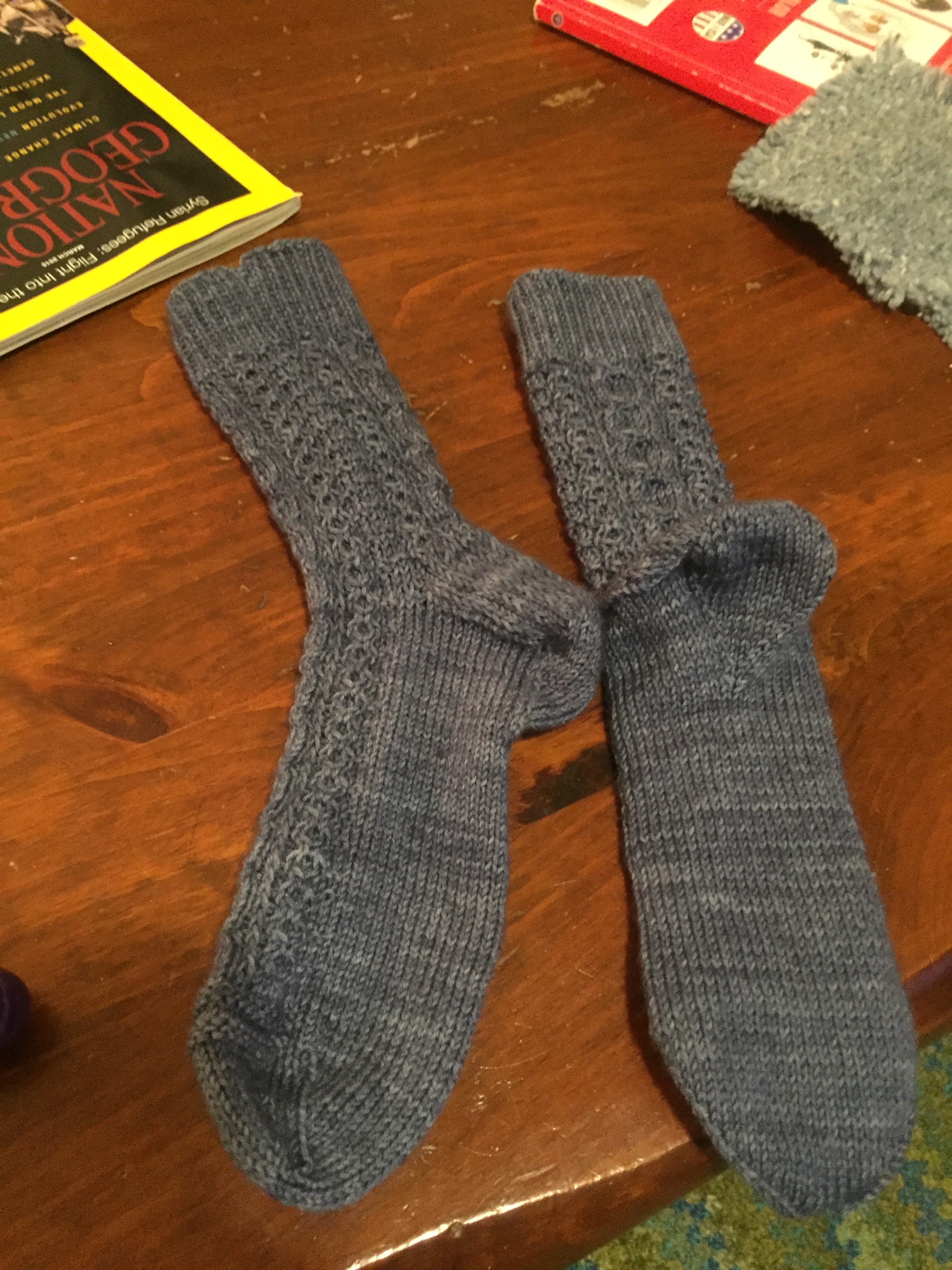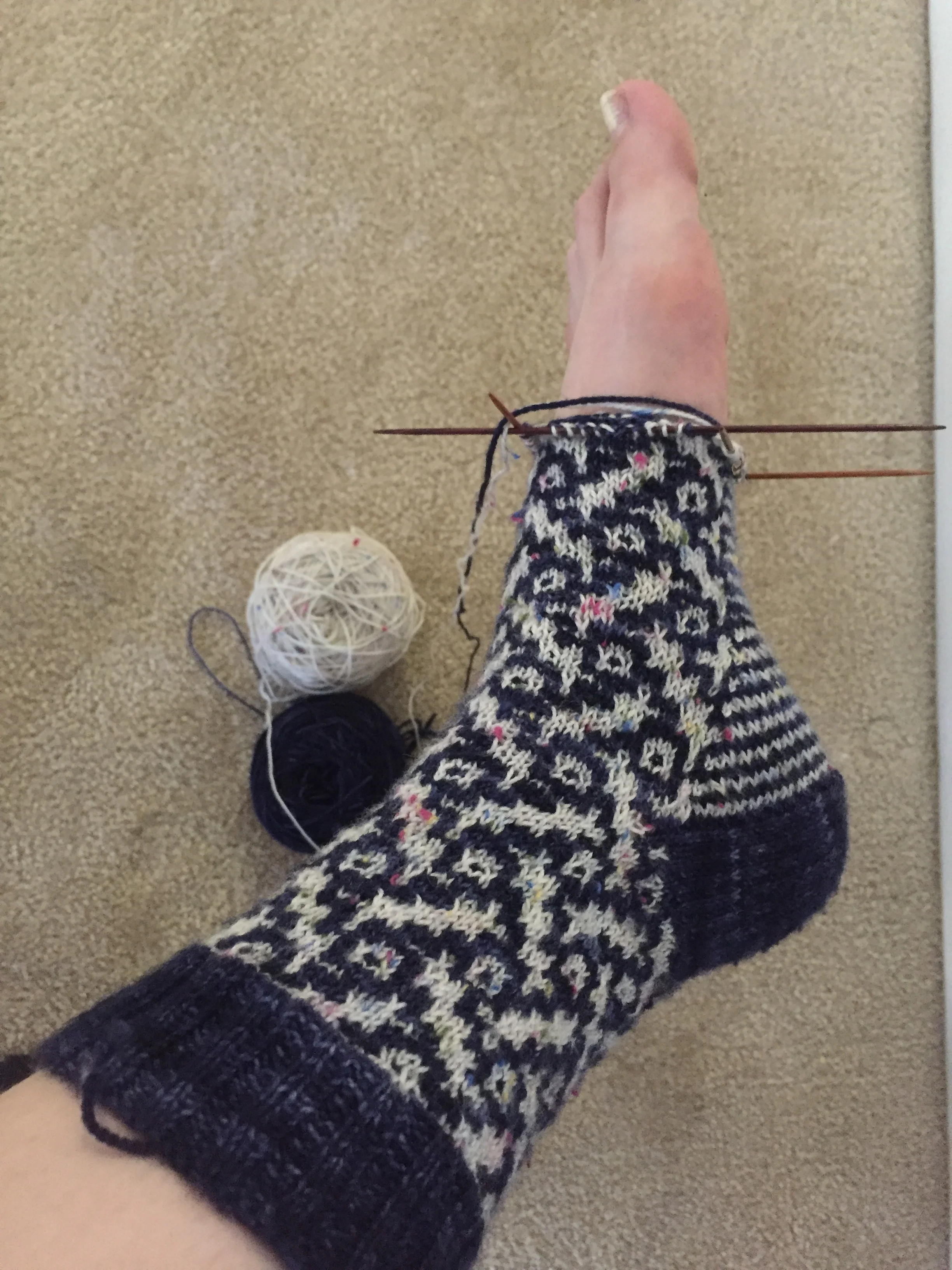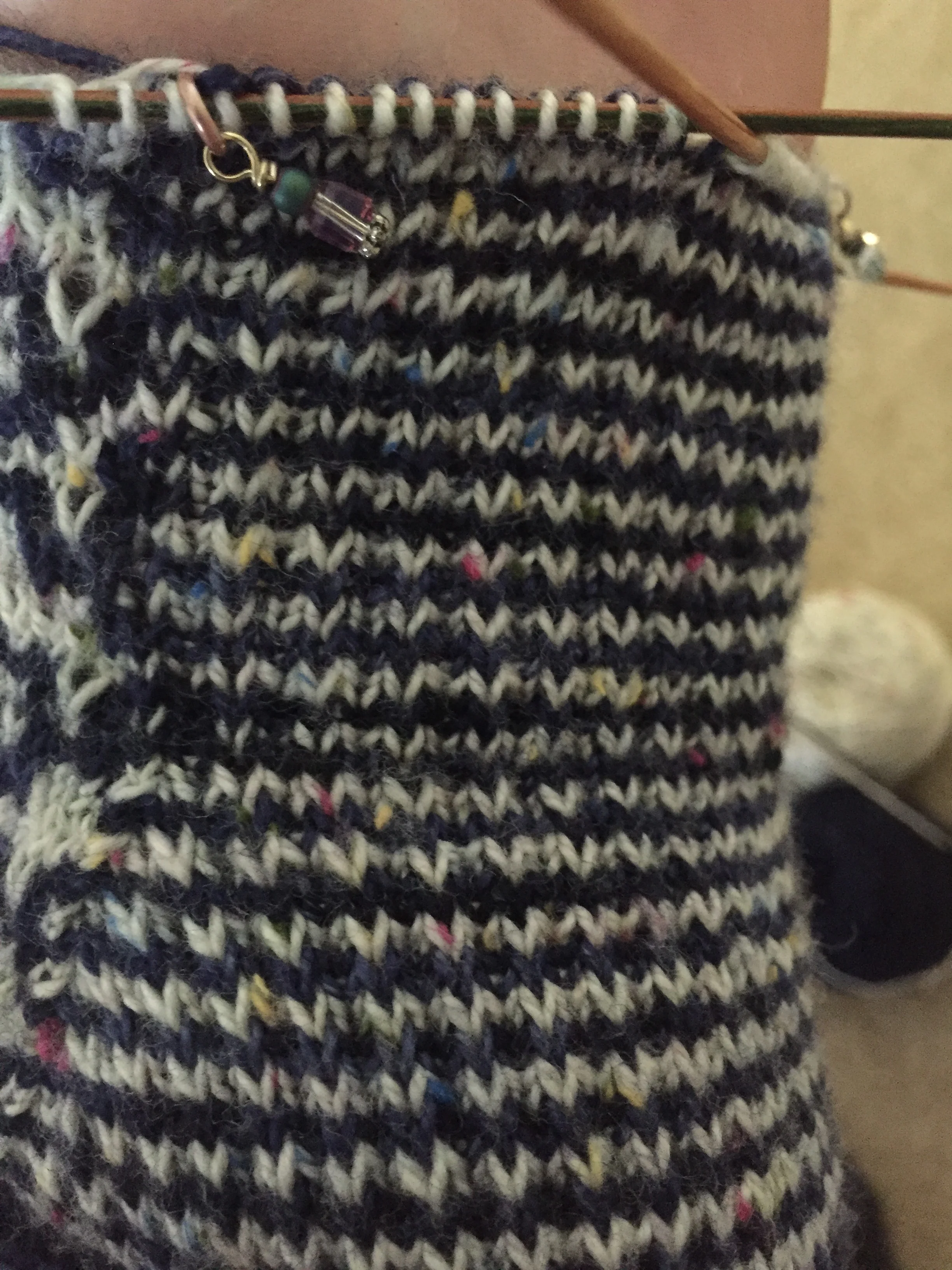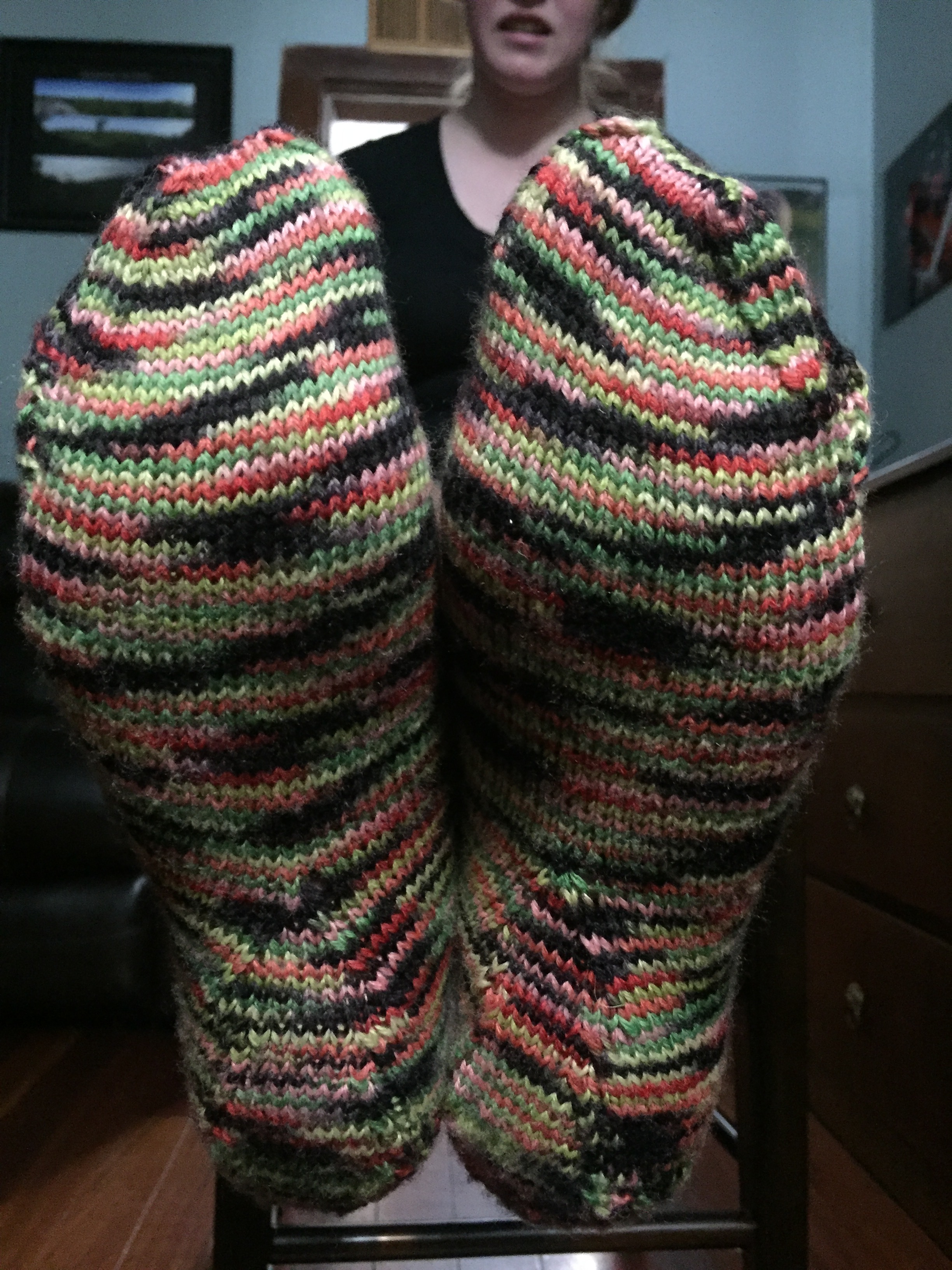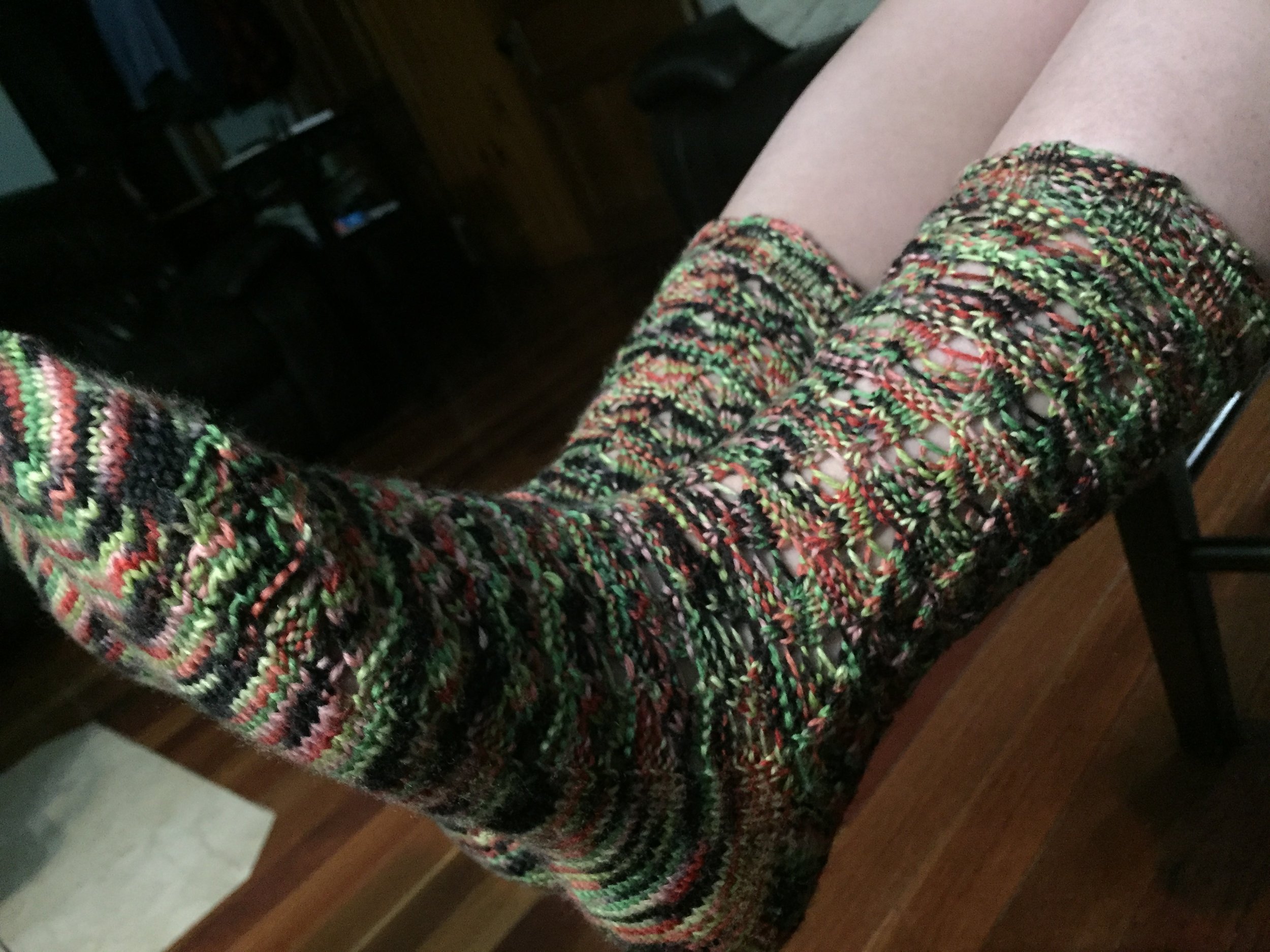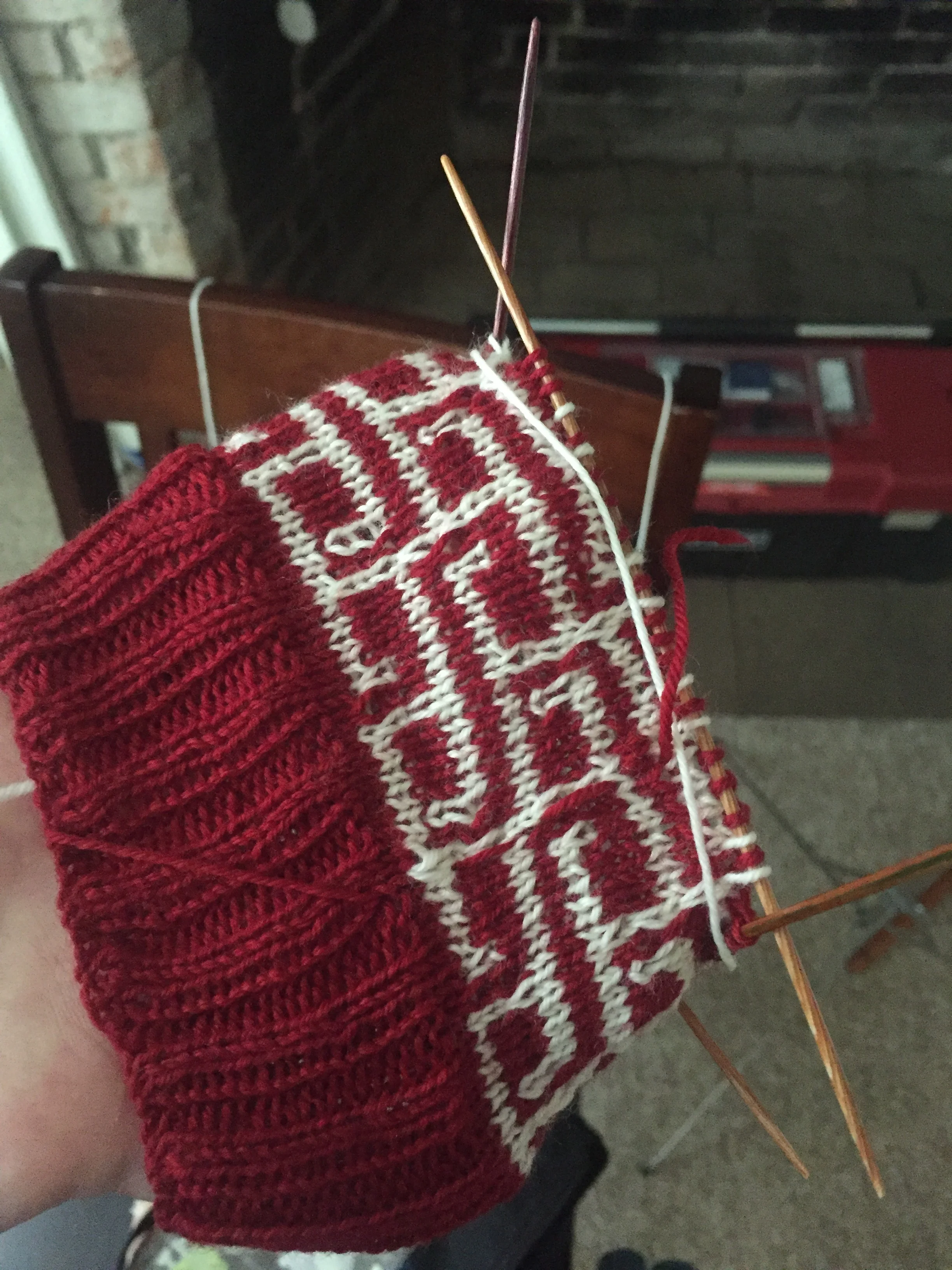The navy is from Kim Dyes Yarn, colorway: String Theory-blue, yarn: sourdough sock. The tweedy white is from Yankee Dyer Yarns, colorway: In the buff, yarn: yankee tweed. When I realized I'd run out of navy for mosaic 13, I went to my local yarn store to see if they had a navy sock yarn. They didn't have a solid navy, but they did have this lovely tonal, and they helped me pick out the tweedy cream to go with it. (My mom's local yarn store didn't have a solid navy either, nor even did my my mom's stash (or at least the portion of it she searched), but a thorough search of my own stash (clearly only the last resort-we had to exhaust all other options first) revealed a navy that I used to finish up the socks.) I have a fondness for tweeds, but even my mother, who says tweed yarns look like they picked up all the waste bits of fluff off of the floor and spun that into the yarn, really likes how these socks turned out.
The name, basketweave, is what Barbara called it, and I've been unable to come up with anything more interesting. I like it though, even if I can't come up with a good name for it. I put a thick, reinforced bottom on this pair, by which I mean that for the first row with a color I simply knit across the bottom, but for the second row I knit, slip, knit, slip, etc. all the way across. It's the same stitch I use on my heel flaps. I make sure to slip the stitches in the second row of a color so that there are distinct rows. Maybe next time I'll try doing it the other way, for interest. I think the next sock might have to have this type of bottom on it, because there's something else I want to try out-I want to just have a solid width of the reinforced, and have the pattern come all the way down, which means that the decreases will have to eat into the pattern not the stripes.















